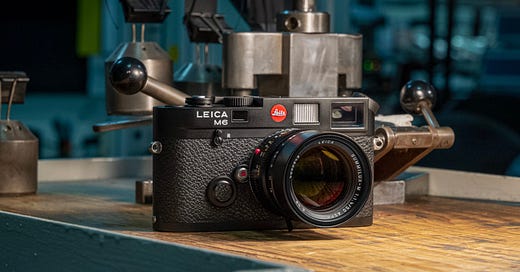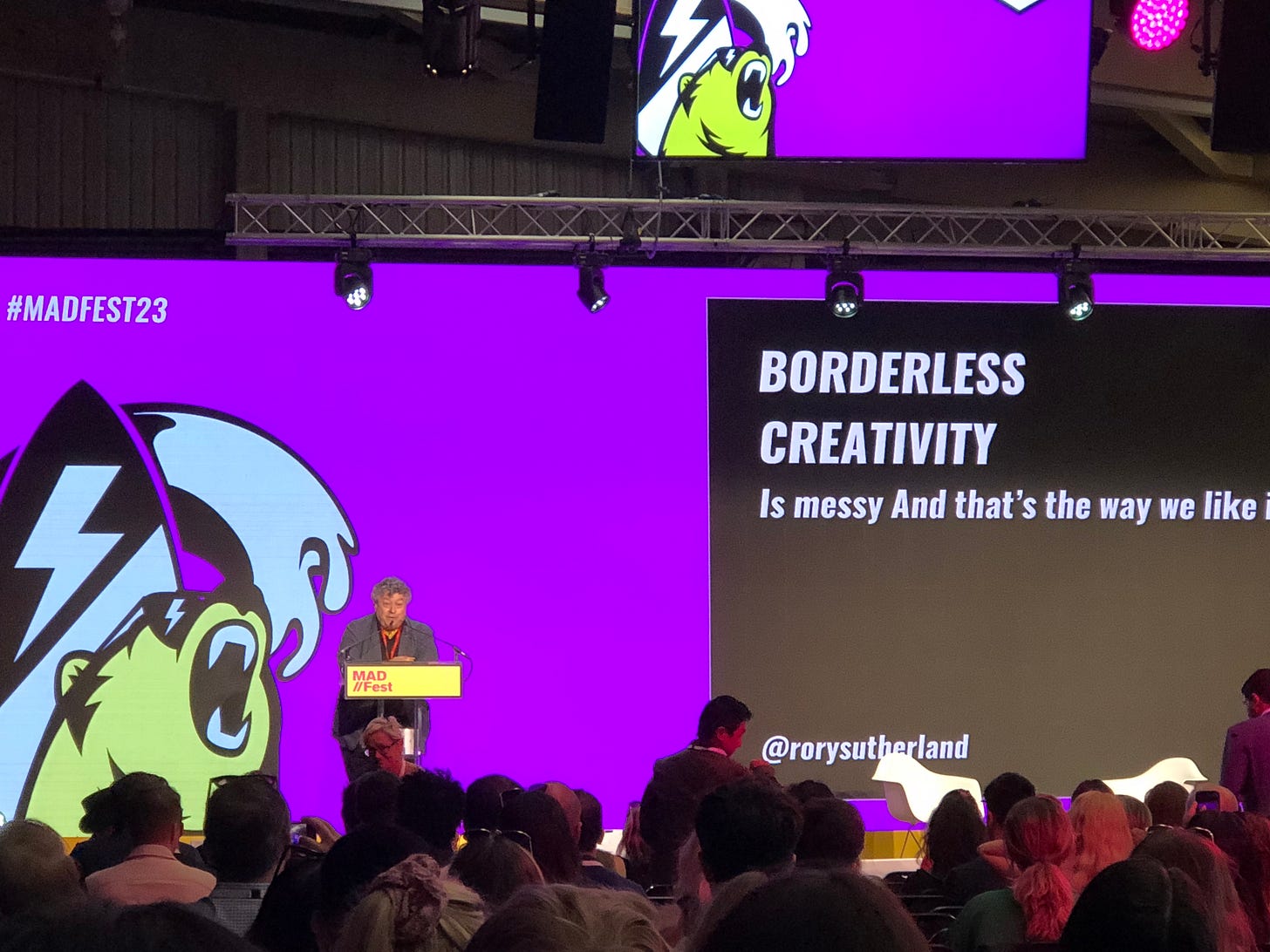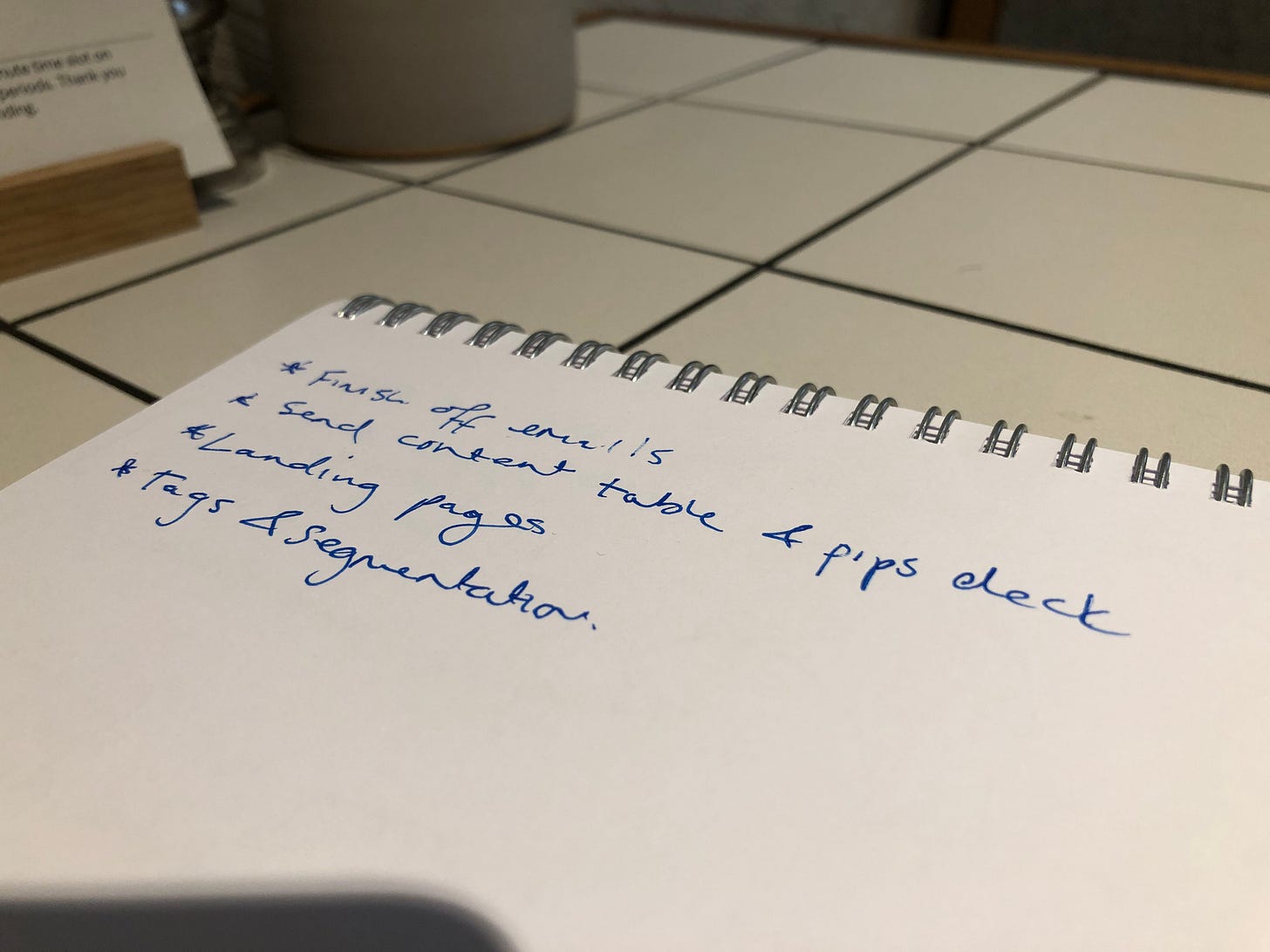Apologies for the day late newsletter ship. I’ve been in London all week (again) attending the MADFest conference.
It was a bit of a logistical nightmare — oversold tickets and queuing problems — but I learned a lot: how to navigate marketing in economic uncertainty, consumer psychology in a digital world and a fantastic talk from Rory Sutherland on leaning into the messiness of creativity.
If you want to know more, drop a reply.
Right, shall we begin with this week’s piece?
I have an embarrassing confession to make.
I’m a lowkey hipster. Meaning I have this stupid, irrational love for old analogue and vintage stuff.
It started with cameras. When I first got into photography, I bought a Nikon D5500 DSLR.
I took it everywhere with me. Snapping candid photos of people in the streets and capturing the beautiful architecture of London.
After a year of using it, I no longer wanted the clunky and cumbersome look of a DSLR. I wanted a camera with an analogue aesthetic but also the versatility of a digital camera. So I upgraded my camera gear to a Fuji XT-2.
While I loved my Fuji, my heart yearned for an old-school film camera.
I wanted to be the type of person who carefully framed every shot, had my own darkroom, developed my own film photos, hung them up to dry and produced stunning street photos.
It started with me eyeing up the Canon AE1, and after a few hours of research, I descended into consumer hedonistic madness and fell in love with the Leica M6.
But deep down, I knew for the sake of my bank account, it was best I didn’t buy one. The Leica M6 has a hefty $5295 price tag, not to mention all the rolls of film I need to buy.
Now that I’ve switched creative professions, I’m starting to feel that analogue affliction again.
Typing out words on my laptop will no longer do. I want to own a manual typewriter. I know it’s stupid, but I want to be the type of person who handcrafts letters, thank-you notes, and poems.
You’re probably wondering why not just write the damn thing? Well… I don’t exactly have beautiful handwriting.
Yes, I love sending newsletter emails, but it lacks the personality and charm of a typewritten letter.
Sounds irrational, but we humans love art that is costly to signal. Meaning we value perceived effort. The perceptive value of a hand-drawn portrait will always be more than the AI art-generated image.
However, the rational part of my brain knows that if I do buy a typewriter, the novelty of clacking away, sliding the carriage, changing the ribbon and making mistakes will wear off fast. The idea of a typewriter is far more exciting and romantic than reality.
But that hasn’t stopped me from researching typewriters...
Just like the analogue cameras, there’s a lot to learn. There are so many to choose from and so many little details to consider.
One typewriter that has caught my eye is the Olivetti Lettera 32. It’s a small stylish, turquoise, made-in-Italy typewriter produced between 1964 and 1977.
A quick Google and I can get one for somewhere between £43 to £150.
With a bit more Googling, you’ll find the most expensive Olivetti Lettera 32 costs $254,500.
Who on earth would spend so much on a typewriter? After all, every Olivetti Lettera 32 does the same thing… type letters.
Well... here lies the technique in how I sell.
The $254,500 Olivetti Lettera 32 belonged to American novelist Cormac McCarthy who wrote five million words on it. The typewriter would produce the novels: The Orchard Keeper, Suttree, Outer Dark, Child God, and Blood Meridian.
Which would go on to win the Pulitzer Prize, National Book Award, National Book Critics Circle Award and The MacFurther Fellowship.
Did you notice that?
I’m sure you did. But in case you missed it, it’s the story behind the Olivetti Lettera that caused the typewriter McCarthy bought for $20 to sell for $254,500 at the Christie’s auction house.
The collector who purchased the McCarthy typewriter wasn’t buying a typewriter. He or she was buying the story the typewriter represents:
Five million words
The awards
The history
Emotional stories sell. And they sell effectively. Why? Because stories bypass reason, skip the brain and head straight for the heart.
This is true for your customers in any industry. They’re not buying the product or services you’re selling – they’re buying the story you’re telling.
Here’s another example.
Imagine I’m selling you a sparkly sequined white glove.
Yes, you read that right. Not a pair of gloves, just one glove. Because I’m in the business of being a lowkey hipster and setting a fashion trend.
What’s the most you will pay for it? Chances are you wouldn’t want to pay more than a few £’s for it because what the hell are you going to do with one glove?
Now, what if I said that sparkly sequined white glove belonged to Michael Jackson? The story would change how you value the item.
This works for anything. Here’s an example where I would use storytelling to sell and boost customer loyalty.
Last year, Foster sent me a beautiful orange notebook.
The notebook is much more beautiful than the shitty notepad that I use. But for some reason or other, I’ve not cracked it open and slung my ink over the pages. In fact, it sits on my desk collecting dust.
I know Foster has gone to great lengths to produce notebooks. But while I do appreciate the gift, nothing in their marketing message connected with me. The only thing they said to me was that I had a surprise gift coming.
This is what I would do if I was in Foster’s marketing department. (Sorry, not sorry, Dan, for the unsolicited marketing advice).
I would find the finest paper money can buy, hire a caligrapher and have them write:
“Dear Jason,
All of the greatest writers started their books by writing down their ideas. We hope this is the notebook that will hold the idea for the book you’ve always wanted to write.
Love Foster.”
This simple story conjures up a future in my head where I’ve found writing success.
The power of narratives transforms the insignificant into the significant.
But as I mentioned above, stories bypass reason, skip the brain and head straight for the heart. This can lead us astray, and we can end up falling victim to narrative bias.
More on that next week…
– Jason Vu Nguyen










Ah, but it is the Muji pen that tells the true story of lowkey hipster obsession. Now, there's a cult worth belonging to. (I haven't cracked open my Foster notebook either, mostly because it seemed too 'nice'. Something I'm trying to over come...not using something because it is too nice and then realising it's too old to use.)
Re random fantasizing about typewriters - As someone who learned to type on one of those, who actually used to have send teletype message on the ribbons of paper with punched out holes, a computer keyboard is way, way better. You will need to wrest the Command Z keys from my cold, error producing, always second guessing, typo prone hands.